

Sony have just released the A7R V, a 61 megapixel full-frame mirrorless camera with 8K video recording, but how exactly does it compare to the range-topping Alpha 1 model?
We’re bringing you this in-depth head-to-head comparison between the new Sony A7R V and the flagship Sony A1 to find out what the key differences are between them.
You can also read our detailed Sony A1 review to find out exactly what we think of that camera.
Sensor
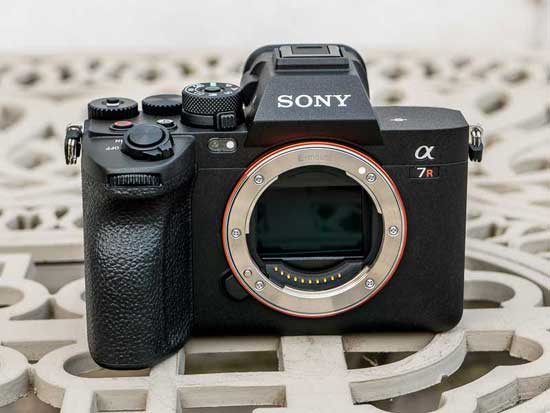
The Sony A1 has a 50 megapixel sensor while the A7R V has 61 megapixels, giving it an edge in out-and-out resolution, although you’d probably be hard-pressed to tell the difference between the two unless you’re making large prints or aggressively cropping into the image.
The Alpha 1’s stacked design and its slightly lower megapixel count could potentially give it an advantage over the A7R V for noise control at higher ISO values.
What mainly differentiates the Alpha 1 and A7R V is the type of sensor that they have. The A7R V uses a standard back-side illuminated CMOS sensor, whereas the A1 has a back-side illuminated, stacked CMOS sensor with integral memory, which delivers faster performance and much faster burst speeds.
ISO Speed
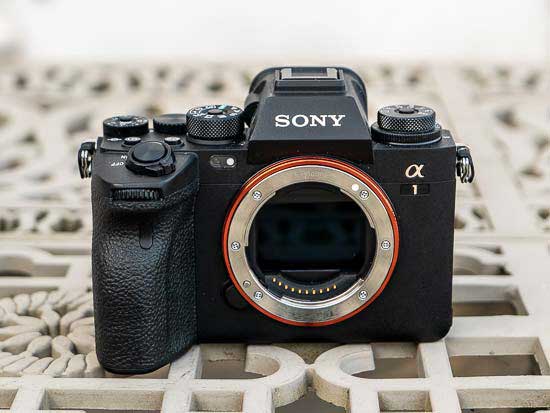
The native sensitivity range of the Sony A7R V and the A1 is identical – ISO 100-32,000, which can be expanded down to ISO 50 and up to ISO 102,400.
Pixel Shift Multi Shooting
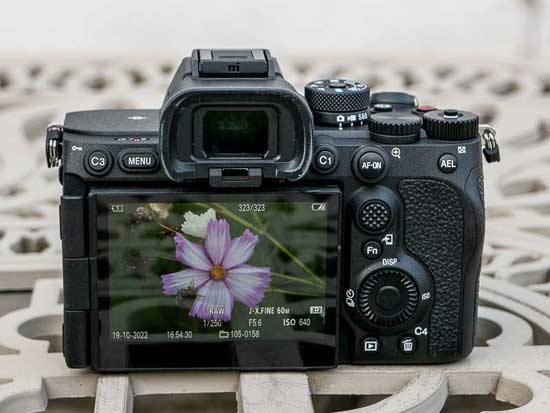
The Sony A1 has a special multi-shot shooting mode in which it takes 16 different images that can then be combined using the Imaging Edge Desktop software to produce a single, 199-megapixel image.
Amazingly, you can even use flash during this process if required thanks to the new sensor’s fast readout speed.
The A7R V has an even higher-resolution 241 pixel shift multi shooting mode, but you can’t use the flash as on the Alpha 1.
A new version of the Imaging Edge Desktop will be released at the same time as the A7R V which can automatically detect and correct small movements in the 16 images, such as leaves in trees or people.
This should greatly expand where and when you can deploy the Pixel Shift Multi Shooting mode.
Note that owners of the Alpha 1 will also benefit from this key improvement when the new software app is released.
Multi Resolution
The A7R V inherits the Lossless Compressed RAW format that was recently introduced on the flagship A1, which reduces the file size by 50-80%.
Both models offer the choice of 26 megapixel / Medium or 15 megapixel / Small versions of both RAW and JEPG/HEIF files.
Unique to the new A7R V is the ability to switch from 60 megapixel full-frame to 26 megapixel APS-C stills when shooting Lossless Compressed RAW or JEPG/HEIF, enabling you to instantly “zoom in” on your subject at the push of one customisable button without the need to change either focal lengths or lenses.
Video

The Alpha A7R V is a much better video camera than the previous A7R IV model, but it still can’t quite match the flagship A1.
The A7RV can record 8K/24p and 4K/60p with a modest 1.2x crop in 10bit 4:2:2 quality. It also offers 4K/30/25/24p and 1080/120p recording with no crop.
Other new video features supported by the A7R V include 16 bit RAW output, S-Cinetone profile, breathing compensation, focus map, and Active+ stabilisation.
The Sony A1 offers 8K/30p 10-bit 4:2:0 XAVC HS video recording with 8.6K oversampling, in addition to 4K 120p 10-bit 4:2:2 and Full HD at 240fps movie shooting capabilities, and can also output 16-bit Raw video over HDMI.
Autofocus
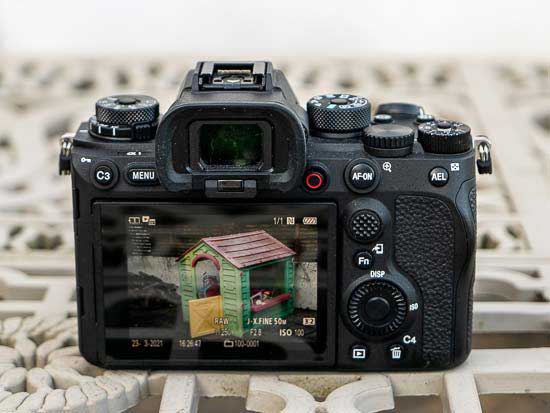
The Sony A1 has an AF system with 759 on-sensor phase detection points that cover approximately 92% of the image area., whereas the new A7R V has only 693 on-sensor phase-detection AF points covering 79% of the image frame.
Both cameras can auto-focus down to EV-4 in low light.
The Alpha 1 checks the focus and metering 120 times a second, which should make it even more adept at tracking moving subjects.
By far the biggest difference between the two models in terms of their auto-focusing performance is subject recognition.
This is because Sony has added an AI deep learning processing unit to the newer A7R V camera which enables it to recognise more subjects than the Alpha 1, and also greatly improves the detection of humans and animals/birds.
For the first time ever on any Sony camera. the A7R V can recognise a human via its pose as well as its eye and face. So if the person’s head is turned away from the camera, the A7 R V will still accurately detect the subject as human based on its AI deep learning.
Animal and bird detection has been expanded from just being able to recognise the eye on the Alpha 1 to the eye, head and body on the Mark V.
New to the A7RV is the ability to recognise airplanes, cars, trains and insects, all things which even the flagship Alpha 1 can’t currently detect (running version 1.30 firmware).
Burst Shooting
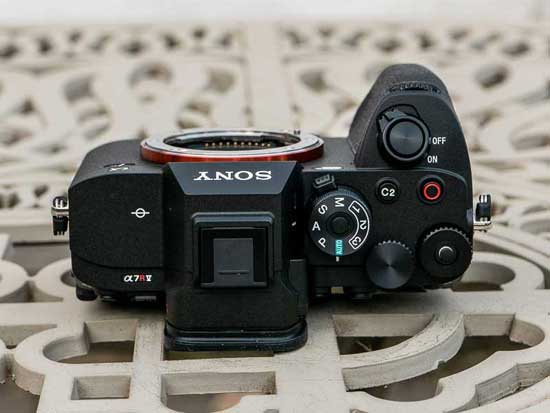
If you want fast burst shooting, the Sony A1 takes things to a whole other level by being able to shoot at 30fps with the electronic shutter, thanks to its new Bionz XR processing engine, although the top speed is still only 10fps when using the mechanical shutter.
The burst shooting rate of the new A7R V model is 10fps with either the mechanical or electronic shutter, but the buffer size has been greatly increased.
Whereas the A1 can only shoot 165 JPEGs or 155 compressed RAW images before the recording rate slowed down, the new A7R V can record up to 88 uncompressed RAW, 184 compressed RAW+ JPEG, 583 compressed RAW, or 1000+ JPEGs, which is pretty impressive for a 61 megapixel camera!
Body and Design
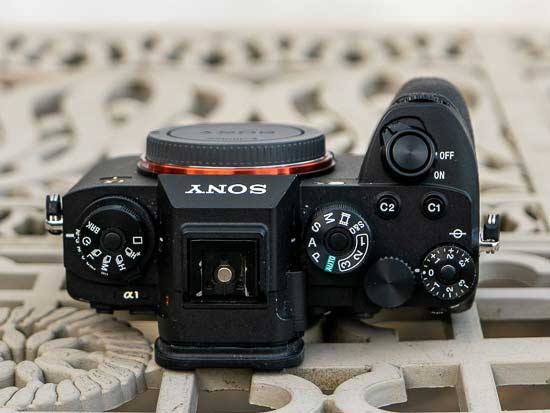
If you were hoping that the Sony A7R V would radically deviate from the tried and trusted Alpha blueprint, then you’ll be sorely disappointed, as it’s virtually identical to the A1.
The one-touch movie record button has been moved from the rear of the A1 camera to the top-plate of the A7R V, swapping positions with the C1 button and also being made slightly larger in the process.
The exposure compensation dial is unmarked rather than displaying the +-3EV values as on the A1, reflecting the fact that it can now be customised on the new model.
There is now a handy Still / Movie / S&Q dial located under the shooting mode dial with the camera remembering the menu settings for each mode.
The A7R V doesn’t have drive/focus mode dials on the left hand side of the top panel, as found on the Alpha 1.
Both cameras have a heat-dissipating structure that prevents overheating during video recording and burst shooting.
The A7R V is ever so slightly thicker than the A1 because of its clever new 4-axis LCD screen (more on that below).
On both cameras the shutter mechanism is closed and protected by a cover when the it is powered off.
There’s a new anti-dust system on the A7R V.
Both models offer 500,000 frame shutter life.
IBIS
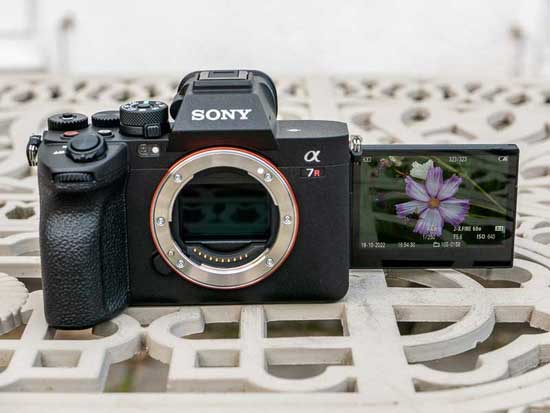
The release of the A7R V marks a big step forward for IBIS in Sony Alpha cameras.
Most previous models, including the A1, have exactly the same 5-axis optical in-body image stabilization system which provides up to 5.5-stops of compensation.
This has been one of the few areas where Sony lags behind some of it main rivals, with some offering up to 8 stops of compensation when used with certain lenses.
Now Sony has joined the party with the launch of the A7R V, which thanks to a newly redesigned stabilisation unit now offers up to 8 stops of in-body stabilisation, making it the most capable Alpha camera in this regard.
Both models benefits from having a special Active Mode that increases stabilization for hand-held movie shooting by using the BIONZ XR processors.
Viewfinder
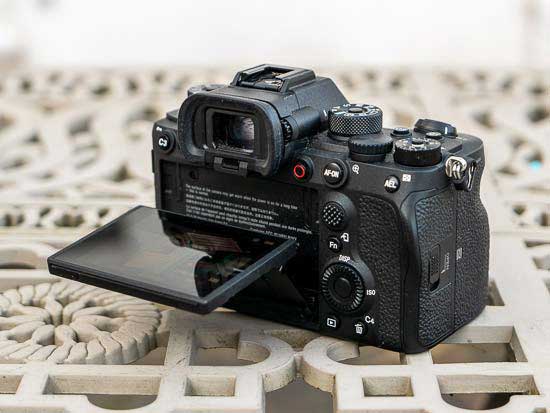
The new Alpha A7R V has a 9.44M-dot OLED Quad-XGA electronic viewfinder with 0.90x magnification and a refresh rate of up to 120fps.
The Sony A1 goes one step further, sporting the same 9.44M-dot OLED Quad-XGA EVF with 0.90x magnification but doubling the refresh rate up to 240fps which ensures no black-out.
LCD Screen
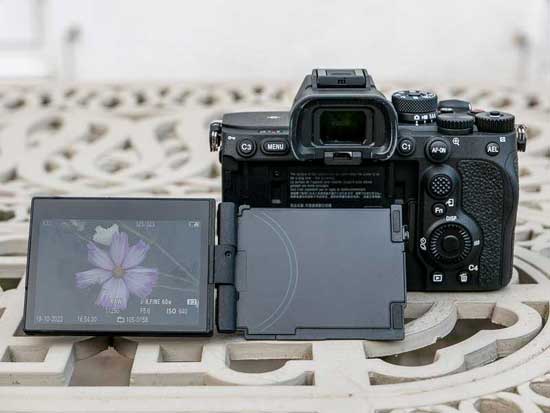
One of the biggest upgrades on the A7R V is its staggeringly good LCD screen.
It has a 3.2-inch, 2095K dot resolution screen compared to the A1’s 3.0-inch LCD screen with 1440K dots of resolution.
The biggest change is the new screen’s sheer versatility.
The screen on the A1 can only be tilted up by 107 degrees and down by 41 degrees, whereas the A7R V has an incredible new 4-axis multi-angle screen that can be flipped out to the side, rotated to the front, folded against the back of the camera to help protect it, and set to many other positions in-between.
In terms of touch-screen functionality, the new Alpha A7R V thankfully follows in the footsteps of the A1, inheriting the same menu structure and upgraded touch control, rather than the crippled touchscreen and more complex menu system of earlier Alpha models.
Memory Cards
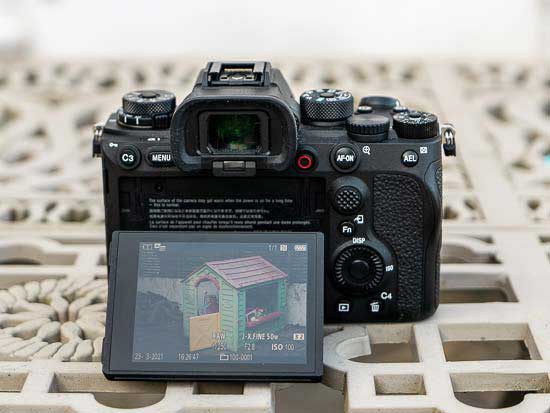
As you would expect from a modern professional camera, both models have dual memory card slots.
Both slots on both cameras can be used for either SD UHS-I/II compliant memory cards or faster CFexpress Type A cards.
Battery Life
Both cameras use exactly the same NP-FZ100 battery, and both offer the same 430 shot battery life per charge when using the EVF and 530 when using the LCD monitor.
Connectivity

Both models offer a number of connectivity options including remote tethered shooting via wireless LAN or USB, 2.4GHz and 5GHz wi-fi, FTP transfer, and the ability to operate as a 4K/15p webcam.
Price
The Sony A7R V is priced at £4,000 body only in the UK, $3,900 in the US and €4,500 in Europe.
The A1 had an RRP of £6,500 / $6,500 in the UK / US when it was launched in 2021, a price that it still commands today.
That makes the new A7R V something of a bargain, at least when compared directly with its flagship sibling.
Conclusion
Although it can’t quite match the Alpha 1 in terms of video specs or continuous shooting speeds, the new A7R V actually outperforms its big brother in some ways, most notably the more capable AI-driven AF system which can recognise more subjects more easily, the excellent 4-axis LCD screen, more effective 8-stop IBIS, and of course its continued billing as the highest-resolution Alpha camera, all at a much lower price point.
So what do you think? Would you choose the new Sony A7R V or the flagship A1? Leave a comment below!






